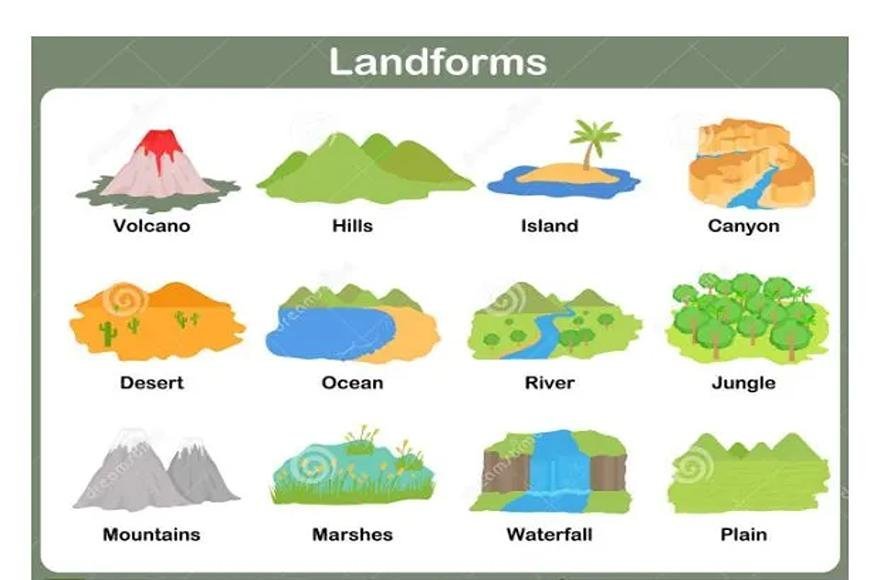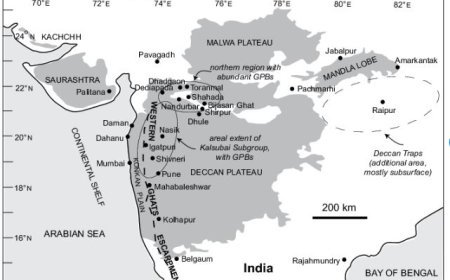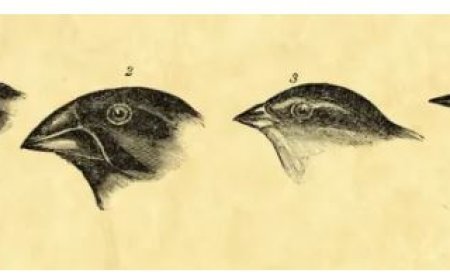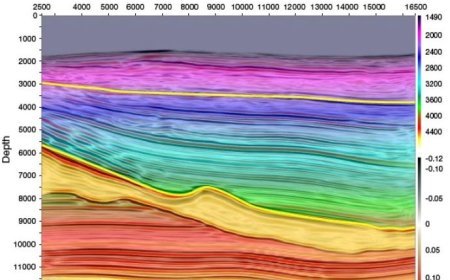LANDFORMS AND THEIR EVOLUTION
Mountains to valleys, carved by nature's hand: Landforms reveal Earth's dynamic story of creation and transformation.

Landforms and their Evolution
- The combination of numerous related landforms creates landscapes that cover large areas of the earth's surface.
- Each landform has its own physics, size, shape, and materials. A landform is generated as a result of the interaction of several geomorphic processes and agents.
- Every landform has a beginning, and its shape and composition change throughout time.
- Landforms change shape as a result of climate change and vertical and horizontal movement. Each landform progresses through three stages: youth, maturity, and old age.
- Geomorphology is the science of landforms. Geomorphic processes like flowing water, moving ice, wind glaciers, subterranean water, and waves have an impact on landscapes.
- Each geomorphological agent produces a distinct collection of landforms. The vast majority of geomorphological processes are invisible.
- The study of landforms emphasises the importance of both the stage structure and the process of landforms. They are in charge of erosion and depositional features.
Landforms
- It is a small to medium-sized part of the earth's surface.
- Geomorphic processes and agents can change the shape, size, and nature of landforms slowly or quickly; and the intensity of processes, as well as the processes themselves, can change as a result of climatic conditions and the vertical or horizontal movement of landmasses. It causes fresh changes in the landforms.
- Every landform has an initial phase and goes through several phases of growth, such as youth, maturity, and old age.
Erosional Landforms
- Several erosional landforms are related to vigorous and youthful rivers that flow over steep grades.
- Stream channels with steep slopes become gentler over time due to erosion and reduce velocity, enabling active deposition.
Depositional Landforms
- This word refers to streams that run across steep slopes. This occurrence will be on a limited scale in comparison to those associated with rivers running over medium to mild slopes.
- The deposition will be larger in rivers with a gentler gradient or slope.
- The softness of stream beds caused by ongoing erosion accelerated lateral bank erosion.
- Downward cutting is becoming less prevalent. The hills and valleys were eventually reduced to plains.
- Minor or significant quantities of materials from the land's surface are removed due to shear friction of the column of flowing water in the flow direction, and gradually small and narrow rills are formed. These rills will gradually develop into long and wide gullies, which will further deepen, widen, lengthen, and unite to form a network of valleys.
- Monad nocks are formed from some low-resistant remnants with a faint lowland relief that is left behind from divides between drainage basins that are let down until they are completely flattened. This sort of plain is known as a peneplain (an almost plain) since it was formed as a result of stream erosion.
Youth Stage
- During the youth stage, only a few streams that don't integrate well run over the original hills that have shallow V-shaped valleys and no floodplains or very narrow floodplains.
- In areas with marshes, swamps, and lakes, streams split into wide, flat sections.
- If meanders are present, they grow over wide hilly areas and may go deep into the uplands.
- There may be rivers and waterfalls in places where hard rock is visible.
Mature Stage
- There are a lot of streams at this point, and they connect better. The valleys are shaped like a V, and the streams are deep.
- The wide trunks have floodplains that are bigger. Streams can easily run through these floodplains to the zigzag inside the valley. At this point, flat and wide areas meet the streams, the youth marshes disappear, and the splitting between the streams becomes clear.
- Falls and waves stop happening.
Old Stage
- Smaller tributaries have a softer gradient during the ageing period. Streams flow easily over the wide floodplains, which show natural levees, oxbow lakes, and other features. Divides are wide and flat, with lakes, swamps, and marshes.
- The land is mostly at or just above sea level, and the valleys are shaped like the letter V. Their streams are very deep.
- The wide trunks have floodplains that are bigger. These floodplains make it easy for streams to run towards the valley while going around the road that is stopped.
What's Your Reaction?



































